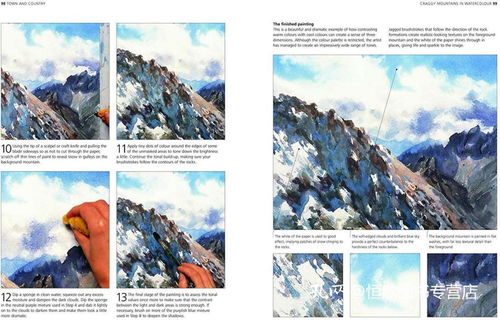In the serene embrace of mountain gullies, where the sound of flowing water meets the tranquility of nature, lies the allure of mountain gully fishing. This unique form of angling offers a different set of challenges and rewards compared to traditional fishing. Whether you are a seasoned angler or a beginner looking to explore the mountainous terrains, here are some essential techniques to help you master the art of mountain gully fishing.
Understanding the Terrain
Mountain gullies are characterized by their steep slopes, rocky beds, and varying water currents. The first step in successful mountain gully fishing is to understand the terrain. Observe the water flow, identify the best spots for casting, and be aware of potential hazards such as slippery rocks and strong currents.
Choosing the Right Gear
The gear you choose can significantly impact your fishing experience. Here are some key considerations:
Rod and Reel: A lightweight, flexible rod with a fast action is ideal for mountain gully fishing. This allows you to cast accurately and feel the subtle movements of the fish. A spinning reel is recommended due to its versatility and ease of handling in tight spaces.
Line: Use a monofilament line with a breaking strength of 6 to 10 pounds. This provides enough strength to handle the unpredictable nature of mountain gully fishing without being too heavy and affecting the sensitivity of your setup.
Lures and Baits: Live bait, such as worms or minnows, can be effective in mountain gullies. However, artificial lures like spinners, jigs, and flies can also attract fish. Experiment with different types to see what works best in your specific environment.
Casting Techniques
Casting in mountain gullies requires precision and control. Here are some tips to improve your casting technique:
Short Casts: Due to the confined space and potential obstacles, short casts are often more effective. Aim to cast no more than 20 feet to maintain control and avoid snagging.
Sidearm Cast: The sidearm cast is particularly useful in mountain gully fishing. It allows for more control and accuracy, especially when casting around obstacles.
Practice: Spend time practicing your casting technique on flat ground before heading out to the mountain gully. This will help you develop muscle memory and improve your casting skills.
Bait Presentation
Once you have your lure or bait in the water, the key is to present it in a way that mimics the natural movement of the fish's prey. Here are some tips:
Natural Movement: Let your lure or bait drift naturally with the current. Avoid too much movement, as this can spook the fish.
Patience: Be patient and wait for the fish to come to you. In mountain gullies, the fish may be more cautious, so it's important to give them time to approach.

Adjustments: If you don't get a bite, try adjusting your lure's depth or speed. Sometimes, a slight tweak can make all the difference.
Safety First
Mountain gully fishing can be dangerous, especially for those unfamiliar with the terrain. Always prioritize safety:
Footwear: Wear sturdy, waterproof footwear with good grip to prevent slipping on wet rocks.
Water Conditions: Be aware of the water conditions. Strong currents can be dangerous, and sudden changes in water levels can occur without warning.
Company: Fish with a friend or guide, especially if you are new to mountain gully fishing. They can provide valuable tips and help keep you safe.
Conclusion
Mountain gully fishing is a rewarding experience that combines the thrill of the hunt with the beauty of nature. By understanding the terrain, choosing the right gear, mastering casting techniques, and prioritizing safety, you can enhance your chances of success. Remember, the key to mountain gully fishing is patience, practice, and a deep respect for the natural environment. Happy fishing!












